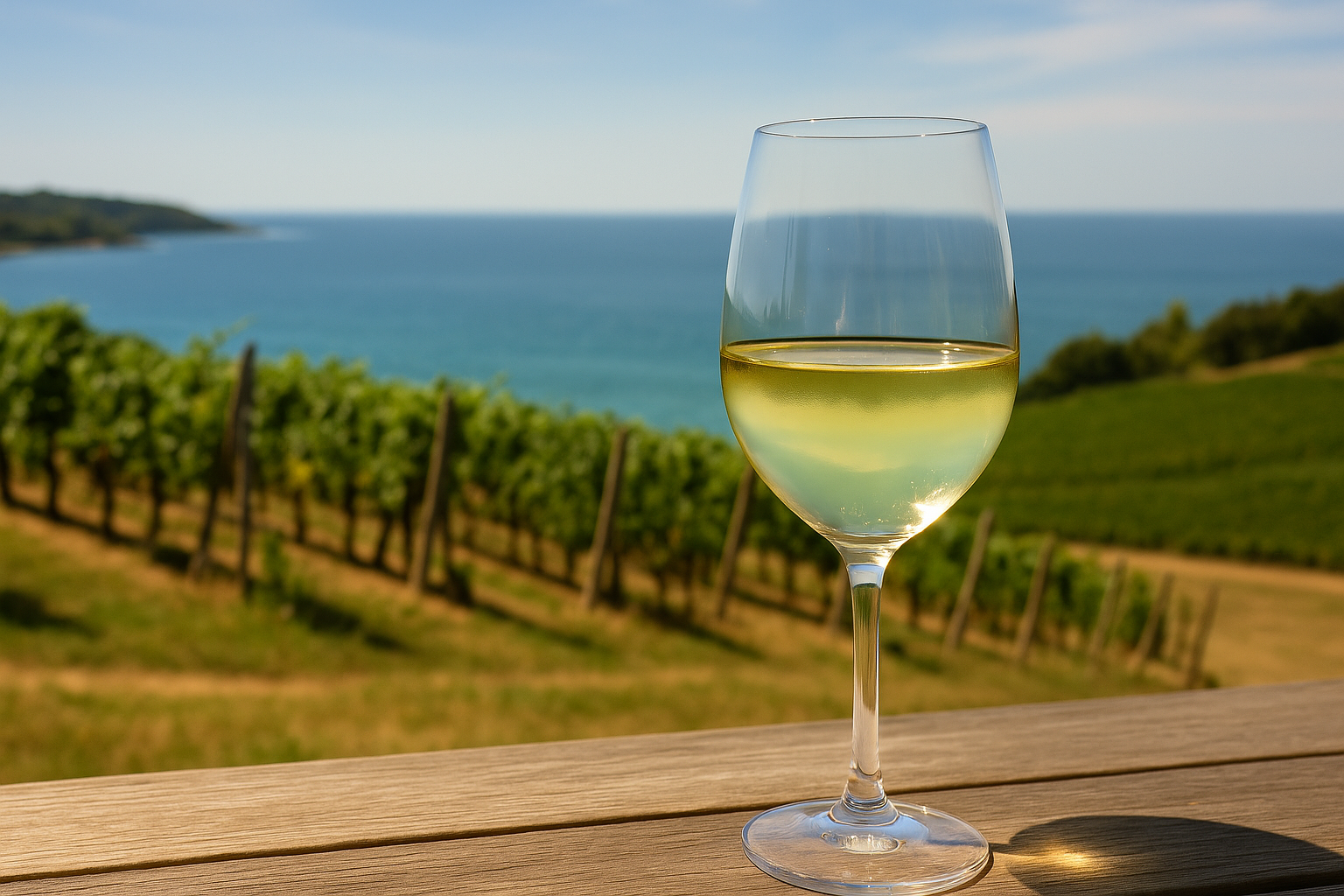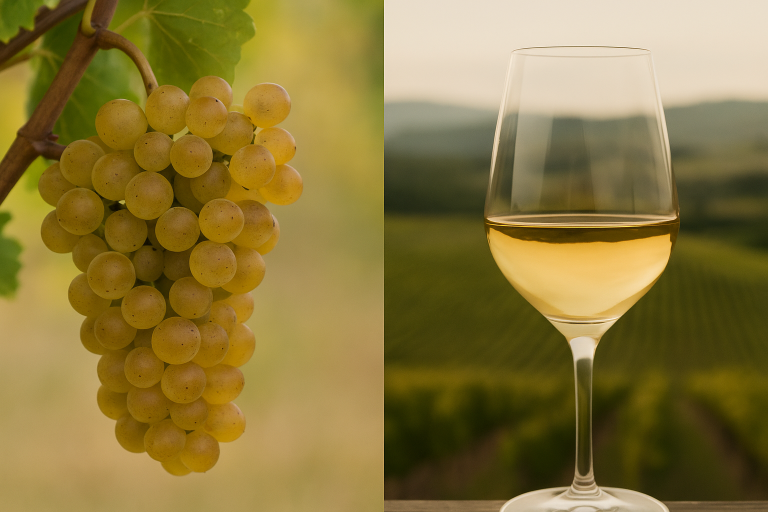Crisp, aromatic, and bursting with coastal freshness, Albariño is one of Spain’s most enchanting white wines. Often described as the “wine of the sea,” it captures the essence of its Atlantic homeland with bright citrus notes, saline minerality, and a refreshing, mouthwatering finish. Whether enjoyed on a sunlit terrace or paired with a plate of fresh seafood, Albariño embodies the spirit of ocean breezes and coastal simplicity.
A Brief History
The origins of Albariño trace back nearly a thousand years to Galicia, the lush, rain-kissed region in Spain’s northwest corner. The name Albariño translates roughly to “white from the Rhine,” suggesting an early link to the German Riesling family — though modern DNA studies confirm that Albariño is distinctly Iberian.
Legend has it that monks traveling from France or Germany brought the grape to Galicia during the Middle Ages, planting it in the valleys near the sea. Over centuries, it became the signature grape of Rías Baixas, where its thick skins and natural acidity thrived in the region’s cool, damp climate.
In the 20th century, Albariño evolved from a local specialty to an international favorite, thanks to its versatility, freshness, and distinctive flavor profile. Today, it stands among Spain’s most celebrated white wines — elegant, expressive, and perfectly suited to modern palates seeking brightness and authenticity.
Where It’s Grown
Albariño is most famously grown in Rías Baixas DO, a denomination that hugs Spain’s Atlantic coast near the Portuguese border. The region’s granite soils, ocean mist, and moderate temperatures create ideal conditions for the grape’s slow ripening and balanced acidity.
Outside Spain, Albariño also thrives in Portugal, where it’s known as Alvarinho and is a key grape in Vinho Verde blends, particularly in the subregions of Monção and Melgaço.
Beyond the Iberian Peninsula, Albariño is gaining traction in California, Oregon, Australia, and New Zealand, where winemakers admire its aromatic intensity and coastal adaptability. In all of these regions, it retains its hallmark freshness and sea-spray minerality.
Tasting Notes
Albariño is typically light- to medium-bodied, with high acidity and bright, aromatic character. Its nose bursts with citrus, green apple, pear, and white peach, often accented by honeysuckle, orange blossom, and wet stone.
On the palate, Albariño is crisp and lively, with flavors of lemon zest, apricot, melon, and saline minerality. It often carries a faintly briny note — a whisper of the nearby Atlantic — making it one of the world’s most refreshing and food-friendly wines.
Serve well chilled (around 48°F) and pair it with oysters, grilled shrimp, scallops, sushi, or paella. Its natural acidity and minerality also complement creamy cheeses, citrus-forward dishes, and Mediterranean fare.
The Essence of Albariño
Albariño is a celebration of place — a reflection of sea spray, granite soil, and ocean air. It’s not just a wine to drink; it’s a sensory journey to Galicia’s windswept coastlines and terraced vineyards.
In every glass, Albariño offers a taste of the Atlantic — fresh, vibrant, and alive. For those who crave wines that balance energy with elegance, Albariño is a revelation — the perfect companion for seafood, sunshine, and life’s simple pleasures.







